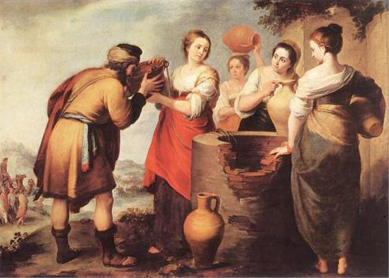We perhaps think that “the family” is timeless and always the same. On the contrary, many cultures have very different ideas of family than what we are used to. In the New Testament world, “family” could mean all those related by blood and marriage, or those who lived in the same household, including slaves, or something like what we would call nuclear family or ancestry.
What is a “household code”?
Some New Testament texts, especially the Epistles to the Colossians (
Why do New Testament writers write about this?
Earlier and contemporaneous writers were convinced that the stable household under firm patriarchal rule was the basic unit of a stable patriarchal society, reflected in the husband-wife, parent-child, and master-slave relationships. New Testament writers wanted to give assurance that the Christian household contributed just as much to a stable society.
However, there is a noticeable difference between the New Testament and these other texts. Usually the codes focus on the male figure as husband, father, and master and advise him how to act toward his subordinates. In the New Testament codes, both parties are addressed, and the subordinate person is addressed first in each pair: wife and husband, child and parent, slave and master. This recognition of the important role of the subordinate figure is significant. Although the authors could not in their context imagine a fully equal and mutual relationship, they nevertheless intended to convey full access to salvation in Christ to everyone. Ephesians also restricts male privilege in stating that while the wife should “respect” the husband, the husband must “love his wife as himself” (
While today we may hear the “submission” language as antiquated and recognize that assigning this role based on gender or social status is unacceptable, it is nevertheless worth remembering that the authors promote a mutual relationship of all, subordinated to the heavenly Master.
Bibliography
- Blankenhorn, David, Don Browning, and Mary Stewart Van Leeuwen, eds. Does Christianity Teach Male Headship? The Equal-Regard Marriage and Its Critics. Grand Rapids: Eerdmans, 2004.
- Osiek, Carolyn, with David L. Balch. Families in the New Testament World: Households and House Churches. Louisville: Westminster John Knox, 1997.
- Osiek, C. and M. Y. MacDonald, with J. Tulloch. A Woman’s Place: House Churches in Earliest Christianity. Minneapolis, Minn.: Fortress, 2006.





